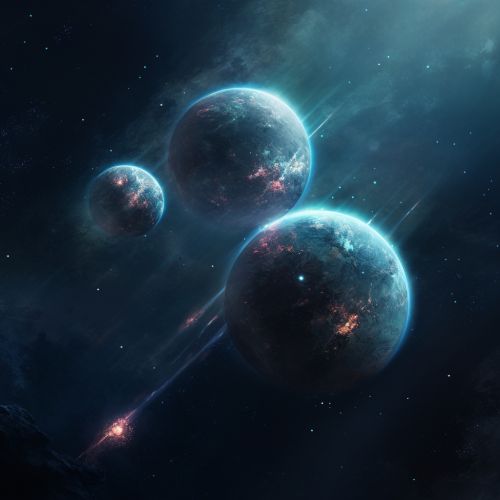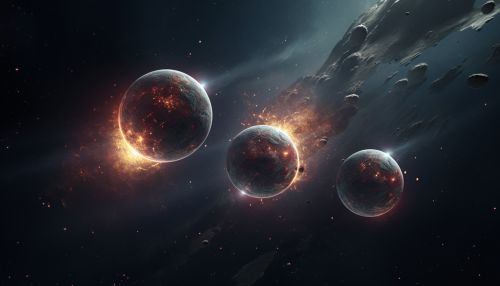Three-body problem
Introduction
The Three-body problem is a special case of the n-body problem, which describes the complex motion of multiple interacting particles in physics. The three-body problem, in particular, deals with the motion of three bodies under the influence of their mutual gravitational attraction. This problem has been a subject of scientific inquiry for centuries, with contributions from many prominent scientists including Isaac Newton, Johannes Kepler, and Henri Poincaré.


Historical Background
The three-body problem first arose in the context of celestial mechanics, specifically in attempts to predict the motion of the Moon relative to the Earth and Sun. In the 17th century, Isaac Newton was able to solve the two-body problem using his newly formulated laws of motion and universal gravitation. However, he found the three-body problem to be much more challenging and was unable to find a general solution.
In the 18th century, the three-body problem became the focus of a famous scientific competition known as the Prix de Paris, which was sponsored by the French Academy of Sciences. The competition led to significant advances in the field, including the development of the perturbation theory, which provides approximate solutions to the three-body problem under certain conditions.
Mathematical Formulation
The three-body problem can be mathematically formulated using Newton's laws of motion and universal gravitation. The motion of each body is described by a set of second-order differential equations, which represent the balance of forces acting on the body. The complexity of the problem arises from the fact that the forces depend on the relative positions of all three bodies, leading to a system of coupled nonlinear differential equations.
The general three-body problem, which considers arbitrary initial conditions and masses for the three bodies, has no known exact solution in terms of elementary functions. However, there are special cases of the problem that can be solved exactly, such as the Lagrangian points in the restricted three-body problem.
Restricted Three-Body Problem
The restricted three-body problem is a simplification of the general three-body problem where one of the bodies (usually referred to as the "test particle") has a negligible mass compared to the other two bodies. This assumption allows the test particle to move under the gravitational influence of the other two bodies, but without affecting their motion. The restricted three-body problem is particularly relevant in celestial mechanics, where it is used to study the motion of planets around binary star systems, or the motion of satellites around planets.
Stability and Chaos
One of the most intriguing aspects of the three-body problem is its connection to the concepts of stability and chaos in dynamical systems. In the 19th century, Henri Poincaré showed that the three-body problem can exhibit chaotic behavior, meaning that small changes in the initial conditions can lead to drastically different outcomes. This result, known as Poincaré's recurrence theorem, marked the beginning of the mathematical theory of chaos and has profound implications for our understanding of complex systems in physics, biology, and other fields.
Numerical Solutions
Due to the lack of a general analytical solution, numerical methods are commonly used to solve the three-body problem. These methods involve discretizing the equations of motion and solving them iteratively on a computer. While numerical solutions can provide accurate predictions of the motion of three bodies over short periods of time, they are subject to numerical errors that can accumulate over long periods, leading to inaccurate results. Various techniques, such as symplectic integration and regularization, have been developed to improve the accuracy and stability of numerical solutions.
Applications
The three-body problem has numerous applications in physics and astronomy. It is used to model the motion of celestial bodies in multiple star systems, to predict the trajectories of spacecraft in gravitational assist maneuvers, and to study the formation and evolution of galaxies. The problem also has applications in other fields, such as atomic physics, where it is used to study the dynamics of three-particle systems.
